All-in-one printers can nowadays be found in almost every household. Whereas previously only single devices, such as scanners, printers and fax were common, nowadays mainly a combination of all these devices is being offered. This comes as no surprise, because all-in-one printers are convenient, very reasonably priced and they can definitely convince in terms of performance. For a long time these devices were considered to be an unsafe investment, since there was a high possibility that one component might fail. But in todays modern world these combination devices are nothing new and they are considered to be very reliable. With the expansion of the product category the selection has also grown substantially. There are a lot of models being offered on the market, which not only dramatically vary in their designs, but also in price. So what should you do? First of all inform yourself. We have a few facts for you.
1. Functioning and Application of All-in-One Printers
An all-in-one printer is defined as a device, which combines a printer, scanner, copier and in some cases also a fax. They are usually much cheaper compared to buying all individual devices separately. These multifunctional devices are mainly used by individuals, but they are also suitable for the office. After all, a lot of space can be saved and the staff loses less time walking around in the office, since all the devices are located in one place. Aside from that, it is also possible to save energy costs with an all-in-one printer, because only one device is held in standby.
1.1 How Does a Laser Printer Work?

All-in-one printers are either offered as laser or inkjet printers. The latter is more technically sophisticated and more expensive to buy, but they are also cheaper to operate. These printers operate on the following principle:
A roller is located inside the housing, which is electrically charging the rotating image drum via ionization until it is fully occupied with negative particles. A laser then shoots at these positions, which itself is immobile and uses a mirror to direct the beams onto the points, where nothing is going to be printed. As a result, the charges on these positions are neutralized. If the image drum continues to rotate, it comes into direct contact with another drum, which possesses positively charged toner particles on its surface. These particles are attracted by the image drum, which then comes into contact with the paper. The additional drum is more charged than the image drum, which is why the particles are transferred to the paper.
At that point, the particles are not firmly attached to the paper, which is why in the final step they are guided through two rollers, that use pressure and heat to fixate the particles.
1.2 How Does an Inkjet Printer Work?
Inkjet printers have a movable nozzle that moves to the left and right via a track. These printers spray text or images line by line onto the paper. During this process the ink is heated and released as vapor, which results in small pixels that dissolve to such an extent, that they are perceived as a consistent tone. There are also three additional toner cartridges in primary colours located next to the black cartridge in the nozzle, in order to print in various colours. To display the different colours, they are placed on top of each other or sprayed closely to one another on the paper.
2. Which Type of Printer Is Right for Me?
More and more areas of life function without paper, because nowadays most people view their photos on tablets, load their train ticket on the phone and write emails on the PC. However, it is still not possible to live completely without printing devices, since it is sometimes required, that a document, or image is available for longer than just one battery charge. This is probably the main reason why most people buy a new printer. But which one should you buy? Inkjet printers are cheaper than laser printers, but are they inferior because of that? It’s not quite as simple as that. Here is an overview of the main criteria:
2.1 Acquisition Costs
The entry segment consists mostly of inkjet printers, while the professional segment is dominated by laser printers. But of course, it’s not as simple as that, especially since black and white laser printers have become more affordable. You might even end up investing significantly more, even for inkjet printers. However, as a general principle you should never resort to the cheapest option. A quick look at expert and customer reviews can help to sort out obviously bad models. As a general rule: if the purchase price is a big concern, then inkjet printers usually stay ahead of the competition.
2.2 Costs and Life Span
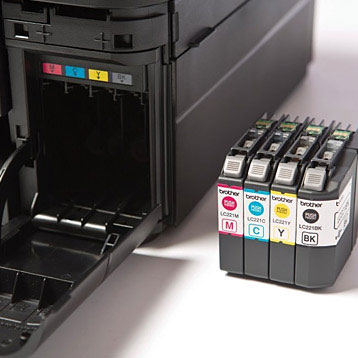
When buying a new printer, you should not only consider the price, but also the follow-up costs, which can quickly exceed the purchase price of the device. This is mainly due to the fact that both inkjet and laser printers need new cartridges on a regular basis, which are pretty expensive. For the end user the ink in the cartridge is even more expensive than champagne.
However, it is not quite as simple as that: A toner cartridge lasts much longer than an ink cartridge, which is why the cost of inkjet printers can quickly multiply, if you are doing some high volume printing. It becomes even more complicated if you consider cartridges from third-party manufacturers and ink cartridge refill services. The ink from these manufacturers usually has a different colour then the original one, and refilling might also cause a catastrophic failure in the print head, a wear part, which is normally replaced with the cartridge. But if you really want to save on costs, then a refilling is probably the best way to hold your follow-up costs low.
If something is sold cheaply, then it probably has a poor quality. Unfortunately, this is especially true for inkjet printers. They are simply considered as inferior and less durable compared to laser printers. One reason for this is certainly the printing method. Inkjet printers have a carriage with cartridges that moves back and forth on the sheet. In the case of laser printers, the sheet is moved over a roller. No considerable movements are executed, which is why the parts wear less quickly.
Consequently, we can conclude that laser printers usually have a longer operating life. Especially high-quality processed inkjet printers outside of the entry level segment can certainly last for many years before something breaks.
2.3 Speed and Sound Intensity
For a long time inkjet printers were considered as slow, but today this is no longer accurate. However, the laser printer still plays out his advantages during high print volumes and finishes the process noticeably faster. With fewer pages the only waiting period consists in the fact, that the printer initially needs to be prepared for the task, boot up and pull in the paper. There is no clear winner here anymore.
Inkjet printers were also considered to be very loud, but even that is simply no longer true. However, on average, they are still louder than laser printers, though not by much. A purely psychological aspect is what really matters here: What do you consider more disturbing? The sudden rattling and bucking of an inkjet printer or the continued faint roar of a laser printer?
2.4 Print Image

An inkjet printer does exactly what you would expect from it: It sprays ink from a fine nozzle onto the paper. Laser printers on the other hand statically charge a roll, which is then rolled over toner powder to transfer it to the paper. This already makes it possible to conclude, where the strengths lie.
The laser printer can produce a particularly sharp print image with fine lines and clear delimitations. This printer type also provides a more accurate result for written documents and graphics. However, laser printers have a lot more trouble when it comes to colourful prints, especially in photos.
This is where inkjet printers have a clear advantage: Your characters might look indistinct and blurred under the microscope, but the colours will shine much more naturally. A decent inkjet printer is able to print as good as any photo delivery service online, especially in combination with special photo paper.
2.5 Conclusion
So what do I need now? Your budget and personal needs will affect the outcome of this question. If you need to print a lot of documents and you have enough money at your disposal for the initial purchase, then a laser printer is probably the perfect choice for you. If you don’t care about follow-up costs and you want to primarily print photos, then you should definitely choose an inkjet printer.
These are some of the rough guidelines. In practice, however, many people have both, a need for high volume printing and money, but they want to save money at the same time. A look at the priorities will decide the answer: Should the device be able to print in colour? If this is the case, then most customers will already rule out laser printers for financial reasons. Should the device be able to print a lot and last for a long time? If so, then the laser printer is the clear winner here. Those who don’t have a clear answer by now, should initially take into account both types of printers when shopping, and keep in mind the strengths and weaknesses of each printing technique, to make a decision.
3. Important Features and Purchase Criteria
All-in-one printers are not always just better or worse, because some of them also possess unique characteristics. There are many unique features that can make the difference for the buyer. A few examples are:
3.1 Print and Scan Resolution
The resolution, in which the device is printing, is indicated with the unit dpi, which means “dots per inch”. The higher the number of pixels, the sharper the image will be. For this reason it is necessary to distinguish between optical and interpolated resolution. Only the former has really a significance, while the latter refers only to intermediate values.
The resolution is indicated, for example, as 900 x 600 dpi. The value 900 refers to the horizontal and 600 to the vertical dimensions. Incidentally, this unit is not the sole criterion for a high-quality device and some printer work with a sharpness, that is not really necessary. 600 dpi is more than sufficient for most tasks.
3.2 Print Speed
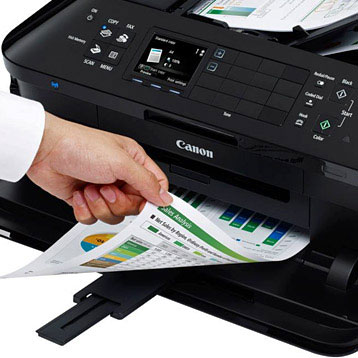
The printing speed is also not an important buying criteria. It is indicated in ppm, page per minute. However, this value should not be taken too seriously, because it usually refers to prints, which have been carried out in a low resolution. The device is able to create these kind of prints significantly faster than most sharp photos or text documents.
This is where the difference between inkjet and laser printers is extremely significant. The latter can compile 20 pages or more per minute, while the former is able to accomplish 5 – 10 pages. However, the speed is usually lower for colour printing. The values ??are also indicated separately in the product details.
3.3 Duplex Printing
In duplex printing, the paper is printed on both sides. Basically all devices are currently equipped with this function. The only difference lies in whether the device is able to turn the paper on its own or if you need to do this yourself. It is advised to choose the automatic option as you will otherwise lose a lot of time, especially if the multifunction printer is used frequently. If you have only limited space available, then it is also advisable to buy a device, which has the duplex unit built inside and not outside.
3.4 Document Feeder
A document feeder allows the printer to automatically pull in the paper that needs to be scanned, so that not each one has to be inserted individually and you can just simply place the entire stack in the feeder. This function is not supported by all devices, but it is mandatory, if you want to scan a lot of documents. After all, it relieves the user tremendously and makes it possible to save time.
3.5 Interfaces
The Interface is usually firmly installed on the housing, but in some cases it can be upgraded without any problems. Nowadays mainly USB is used to connect the device to the computer and old printer interfaces are currently not supported by new PCs. This connection methods allows a much faster transmission of data, but the classic connection is less susceptible to problems, since it was optimized for just one specific purpose. The printer can also be retrofitted with an adapter, if necessary.
In addition, some printers are equipped with a card reader, which allows the printer to read memory cards directly from the device, without the need to previously connect the printer to the computer.
3.6 Display for Quick Adjustments
Most devices have a display to modify different settings such as the size, or to look at photos and determine which of them should be printed. These small screens vary greatly depending on the cost. Some of them are only available with a black screen, while others also support colours or can even be operated via touchscreen. Those who use this feature often, should also ensure that the display is as big as possible.
3.7 Connectivity

Especially if a printer needs to be connected to more than just one computer over long distances, it is advisable to connect the devices via WiFi. However, this function is usually only offered by devices, which are sold in the higher price segment. But this makes it possible to overcome even distances of up to 100 meters, provided that the walls do not block the signal. That may in particular be the case, if steel was built into the walls. Apart from that, outsiders can relatively easily hack into the network and possibly view sensitive data.
In addition, many devices support Apple AirPrint. This is an app that makes it possible to print photos from your iPod, iPhone or Mac. However, this app requires a connection with WiFi, Ethernet or USB.
Another option for wireless connectivity is Bluetooth. In this method the devices are not connected to a network, but directly with one another and the data can even be sent from a mobile phone.
3.8 Dimensions
Usually only the expensive models have a large size, but these are mainly used in the office. After all, the more complicated technology of these devices needs more space, and the containers for the paper are also equipped for additional capacity. Printers for home use on the other hand usually still fit next to the PC on the desk.
3.9 Follow-up Costs
Usually toners need to be replaced less often, which is why the cost per page is generally lower. But they also cost significantly more than ink cartridges.
It should be noted that some higher-priced inkjet printers are so technically advanced that they are able to operate at significantly lower costs similar to laser printers.
In addition, you do not necessarily need to buy the expensive brand cartridges, because you can also opt for recycled products, which are sold by third-party providers. It is even possible to simply refill the ink or save even more by using XXL ink cartridges, which hold almost three times as much ink as conventional ink cartridges. They usually only cost half as much as normal ink cartridges.
4. Important Manufacturers
4.1 Epson
This Japanese corporation was created by the merger of the companies Suwa Seikosha and Shinsu Seiki. Epson produced primarily watches until 1964, when the company started to produce printer. In 1968 Epson then invented a mini-printer, the first of its kind, which was known as EP-101. His successor, which was developed in 1975, was called “SON of Electronic Printer”, from which at a later time the company name was derived. Today Epson is one of the largest suppliers of cameras, scanners and printers, and employs a workforce of nearly 73,000 people.
4.2 HP
The HP Inc was founded in 1939 by David Packard and William Hewlett, two former students of the Stanford University. The initial investment of only $538 has gone into the development of a sound generator, which the two sold to companies like the Walt Disney Studios. The company quickly became a success and was soon able to change its headquarters, which was originally a small garage, to a real office. HP is currently one of the main producers of printers and computers, and employs almost 50,000 people.

4.3 Canon
Canon was founded in 1935. The name of the company was derived from Kwanon, which was the prototype of a camera model. The name is a reference to a figure of the Buddhism. Today the company mainly sells cameras, but it also has scanners and printers on offer. Canon sees itself as a cheap alternative to expensive suppliers such as Leica or Contax. It is one of today’s largest companies for electronic appliances and employs nearly 200,000 people.
4.4 Brother
Brother was established in a workshop named Yarui Mishin Shokai in 1934. To avoid confusing international customers with the original name Buraza Kogyo kabushiki-gaisha, the company was just referred to as “Brother”, since this already sounds similar to Buraza. The company is currently headquartered in Japan, but it also maintains branch offices in Germany and Switzerland. In addition to multifunctional printers, the nearly 20,000 employees also manufacture fax machines and conventional printers.
5. Troubleshooting Common Inkjet Printer Problems
5.1 Clean the Printhead
The disadvantage of inkjet printers is that dust particles can accumulate very easily inside the printhead, if the device is not used for a long time. As a result, most models have an automatic cleaning function in which ink is allowed to flow through the nozzle, to clear the head from dirt. Unfortunately, this function is very expensive and does not always solve the problem.
It is more advisable to clean the printhead manually. Some devices will allow you to remove the printhead, which can then be treated with a cloth to which water or print head cleaner is added. If this procedure does not solve problem, then you can also so place the printhead into a glass and let it soak in nozzle cleaner overnight.
If it is not possible to remove the head, then you can just take out the cartridge and spray nozzle cleaner on the contacts. Start the cleaning program after this and the problem should be resolved. If the printhead is fixed to the tank, take out the cartridge and clean it with a cloth, on which you apply cleaner, from below the nozzle.
5.2 Clearing Paper Jams
A paper jam usually occurs when the printer feeds the paper in a wrong way or simply stops working, while the paper is still inside the device. Some devices are able to tell you exactly why the problem occurred and can also provide detailed instructions to fix it.
If this is not the case, then it must be solved manually. The first step would be to turn off the printer and then simply pull the paper out of the affected area. This should be ideally done in the intended direction, so as not to damage the device. You then need to restart the printer. If the light, which indicates a paper jam, is still flashing, it may help to restart your computer.
If all of this did not lead to a solution, then you have no other option then to contact the customer service.
5.3 The Cartridge Is Empty or Dried Up
Most printers have a separate program, which can automatically clean the cartridge. If this should not solve your problem, then you can also clean the cartridge manually. To do this, you will need to remove the cartridge and rub the bottom side with a wet cloth.
For more stubborn cases you can simply wrap the cartridge in a waterproof bag and put it for a few minutes in warm water. If that does not solve the problem, then the cartridge can be placed directly in hot water, but not longer then 30 seconds.
5.4 Driver Problems
If you have problems with a driver, then you can use the device manager, to check if the latest drivers are installed. If this is not the case, then you need to find the latest drivers. If this is unsuccessful, a reinstall might help.
6. Frequently Asked Questions (FAQ)
Is It Possible to Print CDs With Conventional Printer?
The printing of CDs does not work with all devices. If you want to print directly onto a CD, then you should pay attention to the compatibility before buying. If you still try to print a CD, it may cause permanent damage.
Which Printer Should I Choose for Good Photos – Laser or Inkjet?
Inkjet printers are able to produce much nicer photos, since they can reflect colours much better. There is even special ink available for this purpose, that can produce additional nuances. So if you want to print mostly photos, then you should resort to an inkjet printer.
What Is the OCR Feature for Scanning?
OCR stands for optical character recognition. This feature enables that scanned writings can be transferred into a text editing program, without the need to write them down beforehand. This is a very useful feature.
Print Cartridge Is Not Recognized – What Should I Do?
In such cases, the cartridge needs to be removed and reinserted, which should fix the problem most of the time. However, if this does not happen, then the following might help: First you need to turn off the printer and disconnect it from the power supply. In addition, all cables have to be pulled out and you need to wait 30 minutes. Since the printer resets its settings during this time, the cartridge should be detected at the restart. A look at the manual of your printer can’t hurt either.
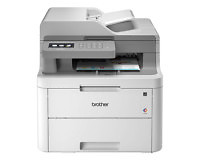

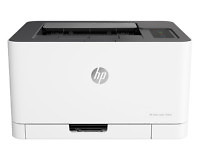

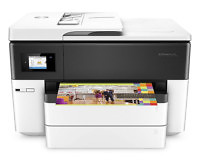

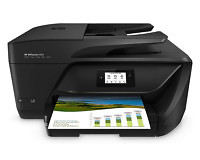



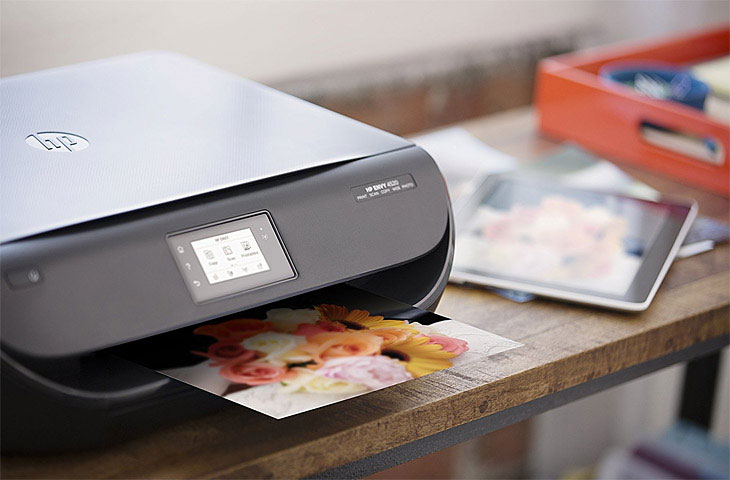

 (21)
(21)

